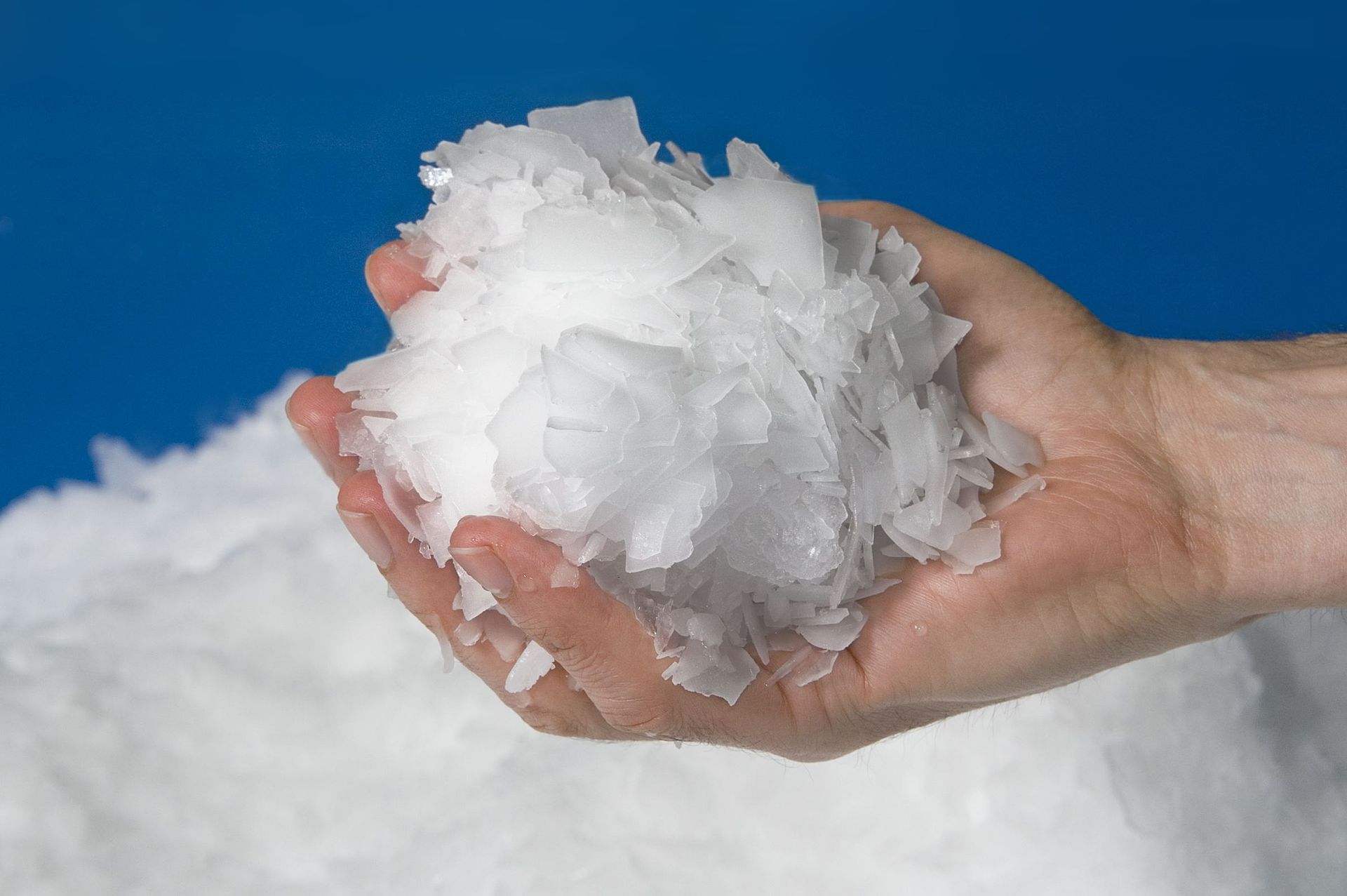Ozonated Ice for Fish Storage
Ozone gas can be dissolved into water with an ozone injection system, then fed into an ice making machine that will then freeze that ozone dissolved into the water to produce ozonated ice. This process will essentially store the ozone within the ice, creating what is commonly refereed to as ozonated ice. This ozonated ice can be
 used in the storage of fish to prolong shelf-life and maintain a fresher, better looking product to the end user.
used in the storage of fish to prolong shelf-life and maintain a fresher, better looking product to the end user.
Ozone use to produce ozonated ice is not a new concept. In 1936, research in the commercial fish industry was conducted in France that showed a 33% extension in shelf-life of fresh fish stored on ozonated ice when compared with ice produced from regular water in the holds of fishing vessels (Salmon, J). Ozone can also be dissolved into water and used to wash seafood and fish fillet's to reduce bacteria and extend shelf-life in fresh fish.
Historically, fresh fish has commanded a premium in price over frozen fish products. The appearance of this fish will affect the market price of fresh fish. Ozone use in ice for storage in fishing vessels has been used to maintain the highest quality fish and garner the highest possible price for fresh fish products. While fishing vessels are at sea it is imperative that the fish and seafood harvested early in the voyage are as fresh and comparable in quality as the fish caught near the end of the voyage. As these vessels can at times stay out to sea for weeks at a time, ozonated ice was seen as a great solution to the storage issues experienced in this unique industry.
The use of ozonated ice in fish storage has expanded beyond the fishing vessel to fish farming and processing throughout the industry. Today, many fish processors and fish farms will use ozonated ice for all their seafood storage needs. Ozonated ice offers a convenient method of prolonging the shelf-life of seafood products.
References and Case Studies:
- Use of ozone and ozonated ice increased shelf life of good quality sardines from 5 days to 8 days, and acceptable quality sardines from 15 days to 19 days (Campos, et al).
- Salmon iced with ozonated ice extended shelf-life from 4 days to 6 days when compared to non-ozonated ice, this data led to full scale implementation of ozone at the same plant in full scale application shelf-life extension of 33-50% was realized (Blogoslawski, et al).
- Catfish fillets treated with aqueous ozone showed a shelf-life of 14 days, compared to 4-6 days for conventional treatments of iced fillets. In this case ozone provided greater than a 100% extension of shelf-life (Brooks and Pierce).
- Squid stored on ozonated ice extended shelf-life by 12% and had a 2 log reduction in aerobic bacterial plate count vs. squid stored on conventional flake ice with no ozone (Blogoslawski, et al).
- Walter Blogoslawski stated in his paper, "Some Ozone Applications in Seafood," that in his research; a plastic milk bottle filled with triple-distilled super-ozonized water (2-4 mg O3/ml water) frozen at -80-deg C could retain a residual of 1-2 mg of ozone for up to 6-months.
- Sease (1976) has stated that the half-life of ozone at 0-deg C, under sterile conditions, is on the order of 2,000 years. Thus, freezing water which contains residual ozone will produce ice containing ozone, which will reform water containing dissolved ozone when it melts. Ozone sterilized ice can normally be expected to be used within a few hours of it's manufacture, certainly within a few days. Under this scenario, there should be little, if any, loss of ozone in the ice due to decomposition back to oxygen (Rice, et al).
For more technical information on the use of ozone and seafood processing review the technical papers below. Each of these papers is available for purchase from the publisher.
Some Ozone Applications in Seafood
Authors: Blogoslawski, Walter J., and Mary E. Stewart Ozone: Science & Engineering: The Journal of the International Ozone Association 33 (2011): 368-373. Read more here.
Abstract
The use of ozonized seawater to reduce and eliminate bacterial pathogens in mariculture facilities and to extend shelf life of marine food products is demonstrated. Consequent benefits of this

treatment are also discussed. Laboratory and pilot experiments were conducted using ozone gas to reduce disease-producing Vibrio sp. bacteria at a shrimp (Litopenaeus vannameii) hatchery in Ecuador, South America. Pacific Ocean seawater was treated in a 1,540 L capacity fiberglass contact tower (5-7 min retention) with an ozone oxidant residual of 0.07 mg/L. Prior to ozone treatment, Vibrio determined by TCBS plating was too numerous to count, causing shrimp to die of disease (30 tanks of 13,000 L each). After treatment, Vibrio counts and shrimp disease were eliminated, ozonized seawater decreased the time required for normal molting of shrimp and the total growth cycle was reduced by three days versus control water. From June 1991 until September 1992, survival rates of larval shrimp were robust, routine antibiotic addition was reduced, and one additional growth cycle was realized. Ozonized ice (fresh water) was prepared in the Milford Laboratory CT, USA; Gloucester Food Tech Lab, MA, USA; and a field station (brine water) for sockeye salmon (Oncorhynchus nerka) in Homer, AK. USA. In these studies, squid (Loligo pealei) and commercially captured salmon demonstrated a reduction in spoilage and extension of shelf life of 3 to 5 days' time using ozonized ice. Bacteria associated with commercial ice-producing machines were reduced by 4 logs using ozone treatment. In addition, no flavor aberration was noted using ozonized ice.
Ozone Applications for Commercial Catfish Processing
Authors: Brooks, G. M. and Pierce, S. W. Paper presented at 15th Annual Tropical and Subtropical Fisheries Technological Conference of the Americas, December 2-5, Orlando, Florida.
Abstract
Current methods of operation in Fish/Seafood/Poultry processing plants include the application of large quantities of chlorine in an aqueous solution, contacting the product directly by spray or submersion, in an effort to control bacterial growth in and on the meat during processing, and subsequently in the fresh meat marketplace; such bacterial content limiting the shelf life of the product (thus limiting shipping radius, storage in transit, export, etc.). The use of chlorine over the long history of this industry, has proven to be ineffective In controlling bacterial growth, resulting in poor shelf life, and inadvertently imposing a potentially harmful chemical on the consuming public.
Effects of Storage in Ozonized Slurry Ice on the Sensory and Microbial Quality of Sardine
Authors: Campos, Carmen A., Oscar Rodriguez, Vanesa Losada, Santiago P. Aubourg, and Jorge Barros-Velazquez International Journal of Food Microbial 103.225 Aug. (2005): 121-30. http://www.ncbi.nlm.nih.gov/pubmed/16083815
Abstract
Current methods of operation in Fish/Seafood/Poultry processing plants include the application of The use of slurry ice, both alone and in combination with ozone, as compared with traditional flake ice was investigated as a new refrigeration system for the storage of sardine (Sardina pilchardus). Microbiological, chemical and sensory analyses were carried out throughout a storage period of 22 days. According to sensory analyses, sardine specimens stored in ozonised slurry ice had a shelf life of 19 days, while counterpart batches stored in slurry ice or flake ice had shelf lives of 15 and 8 days, respectively. Storage in ozonised slurry ice led to significantly lower counts of aerobic mesophiles, psychrotrophic bacteria, anaerobes, coliforms, and both lipolytic and proteolytic microorganisms in sardine muscle, and of surface counts of mesophiles and psychrotrophic bacteria in sardine skin as compared with the slurry ice and the flake ice batches. In all cases, the slurry ice batch also exhibited significantly lower microbial counts, both in muscle and skin, than the flake ice batch. Chemical parameters revealed that the use of slurry ice slowed down the formation of TVB-N and TMA-N to a significant extent in comparison with storage in flake ice. A combination of slurry ice with ozone also allowed a better control of pH and TMA-N formation as compared with slurry ice alone. This work demonstrates that the combined use of slurry ice and ozone for the storage of sardine can be recommended to improve the quality and extend the shelf life of this fish species.
Review of the Applications of Ozone for Increasing Storage Times of Perishable Foods
Authors: Rice, Rip G., John W. Farquhar, and L. Joseph Bollyky Ozone: Science & Engineering: The Journal of the International Ozone Association 4 (1982): 147-63
Abstract

Ozone, the second most powerful oxidant readily available is an excellent sterilizing agent as well as chemical oxidizing agent. Because of this property, it has been studied for preservation foods. Indeed, many European countries currently employ ozone for maintaining holds of refrigerated ships free of bacteria, molds, odors, ets., for preservation of cheeses, eggs, some meats, poultry, some berries and some fruits. Much of this technology was developed shortly after World War II. Many of the earlier studies reported in the literature came to conflicting conclusions with respect to the efficiancy of ozone in providing improvements in storage lives of perishable foods. In light of modern advances in ozone generation and associated equipment, as well as increased understandings of the various technologies associated with the application and handling of ozone, and advances in methods of food transportation (containerization and modularization), it is believed to be timely to re-evaluate the potentials for this versatile, but little understood oxidant/disinfectant, to provide cost-effective benefits in food preservation. This paper represents a first attempt to review past and current studies, with suggestions for future studies to develop those benefits which appear to be achievable for the food preservation and distribution industries.
Flake Ice photo credit: Jpdeex Photo Licensing information
